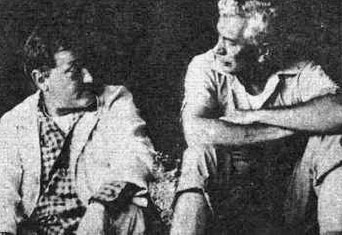Janos (Juan) Moricz
Juan Moricz was born in Hungary, but later moved to South America where he became an Argentine citizen. However, at the time of his meeting with von Däniken, he had been living in Ecuador for many years. He described himself as a scholar who was carrying out research into the folklore and the ethnological and linguistic aspects of native Ecuadorian tribes.
In the course of his fieldwork, Moricz claimed to have stumbled across a network of underground tunnels in June, 1965. These tunnels seemed clearly man-made, but they appeared to have been constructed by a culture that was unknown to archeologists in the region.
In a notarized Title Deed in which he claimed to be the discoverer of these subterranean tunnels, Moricz stated that he had also found “objects of great cultural and historical value to mankind”.
These objects consisted of “stone and metal objects of different sizes and colors”, as well as “metal plaques (leaves) engraved with signs and writing”. What Moricz did not indicate in the Title Deed, and which immediately captured the attention of von Däniken, was that these metal plaques and objects appeared to have been made of solid gold.
 In his book “The Gold of the Gods” von Däniken described how Moricz had taken him to the location of these tunnels, and had led him to a vast underground chamber some 750 feet below the ground, which was clearly artificially carved out of the rock.
In his book “The Gold of the Gods” von Däniken described how Moricz had taken him to the location of these tunnels, and had led him to a vast underground chamber some 750 feet below the ground, which was clearly artificially carved out of the rock.
This chamber, measuring about 450 feet by 500 feet in size, had highly glazed walls together with a smooth floor and ceiling. In the middle of this chamber was an enormous table around which were set seven chairs made of an unusual material resembling plastic.
Forming a perimeter around the table and chairs were numerous sculptured animals. These animals included some that were indigenous to the region, such as monkeys and jaguars. But there were others which were totally foreign to the area, such as lions, wolves, elephant and bison.
As von Daniken later wrote: “The whole thing was like a fantastic zoo and what is more all the animals were made of solid gold.”
But the most significant feature of the chamber was a “library” comprising thousands of metal plates. Each plate was 38 inches high, 19 inches wide, and 1/16th of an inch thick. Yet each of these plates was so sturdy that they stood rigidly in place without bending.
This combination of sheets appeared to be an extensive library, for each of these metal sheets was similar in character. Each sheet was stamped with line after line of unusual symbols in a form of hieroglyphic writing.
Erich von Daniken attempted to take photographs of these metal sheets as well as the other golden objects. However, Moricz prevented him from doing so, perhaps fearing what the publicity of a popular author like von Däniken might bring.
He did however agree to introduce him to an elderly Salesian monk who lived nearby in Cuenca. The name of this pious monk was Padre Carlos Crespi.




